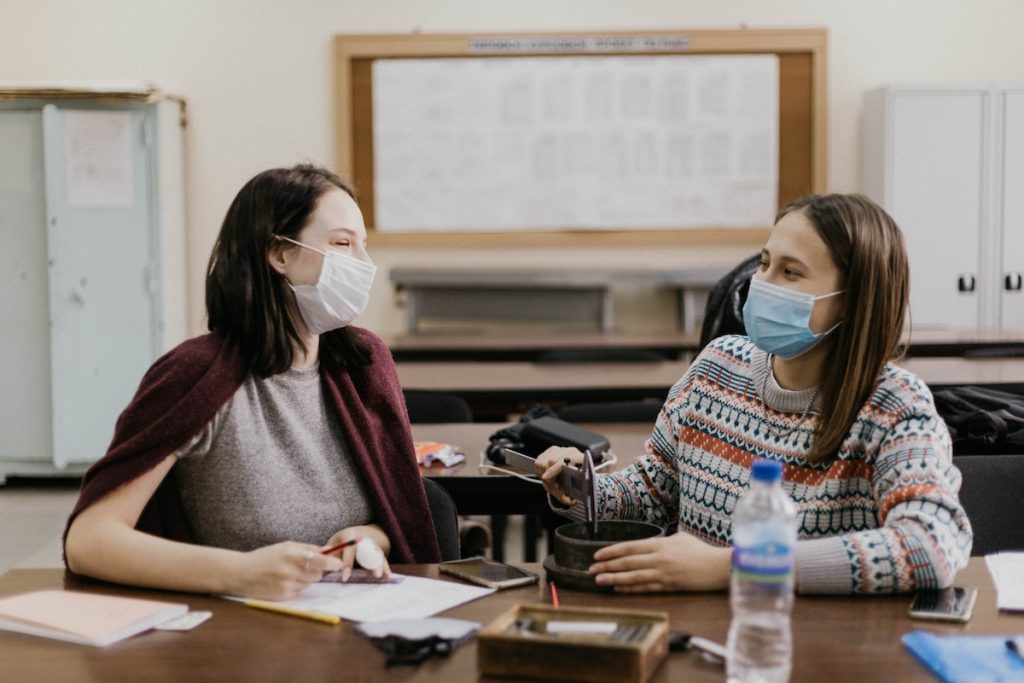Neurofeedback is a non-invasive process where electrical activity within your brain is monitored and ideal brain waves are positively reinforced by various visual and auditory stimuli. Through individualized treatment plans known as protocols, Erin Badour, B.A., BSC., M.S., CCC-SLP, BCN, and her team of neurofeedback experts have helped countless patients with a myriad of behavioral, cognitive, and psychological conditions. Board-certified in neurofeedback and speech pathology, Erin masterfully fine-tunes each protocol to her patient’s unique needs. She can alleviate symptoms of anxiety disorders, attention deficit disorder, sleep disorders, and many more conditions caused by wayward brain waves. If you’re interested in learning more about neurofeedback or wish to see how this non-invasive, non-pharmaceutical process can change your life, schedule a complimentary consultation with Erin Badour, or give us a call at (310) 821-3640.
Back To The Status Quo
Summertime means one thing for children – one awesome, amazing, absolutely astronomical thing: No more school! When that final bell rings and they toss their backpack aside, it’s hard not to feel a little jealous. The next few months mean no more homework, no more assignments, no more early morning alarms. For these upcoming summer months, your child will get a much-needed breather from the trials and tribulations that come with adolescence. Let them kick their shoes off, sip a virgin piña colada, soak in all that sunshine, and enjoy endless free time. For children, summer is an important time to unwind and recharge from the stressors of the school year. It’s also critical for their growing brains. It has been scientifically shown that chronic stress has significant, negative consequences for brain development.[1]
But, those summer months will come and go. The backpack that was so aimlessly tossed aside will have to be exhumed from under their bed. Soon, as back-to-school commercials gradually infiltrate their television shows, you might start to notice a nervousness in your son or daughter. The anxiety of going back to school might not exist in every child, but for those it does affect, going back to school can be terrifying for them – and confusing for you. While the specific reasons for the anxiety may differ among children, common symptoms include:
- Sudden loss of interest in hobbies and favorite school subjects
- Indifference or agitation when the upcoming school year is mentioned
- Avoidance of all things school-related including trying out for teams, participating in clubs, or catching up with friends
As parents, we just want the best for our children, but sometimes we don’t know the right course of action to take. No one knows this better than Neurozone founder Erin Badour. Parents can feel conflicted when finding the right approach for their child’s anxiety. With her extensive experience working with children, and as a mother herself, Erin understands the conflicts that come with finding the best medical solution for children. With neurofeedback, Erin and her team can lessen the brain waves responsible for the sudden influx of anxiety while instilling calmer, more relaxed waves.
Back To Life After COVID-19
Over the past year and a half, your child’s education and social interactions may have only occurred through a variety of screens. Scientifically speaking, the jury is still out on how this may have affected our children’s psychological health. One thing is clear: in 2021, more children than ever will be anxious about returning to the classroom. COVID-19 alone may be enough to trigger a wave of anxiety through an innocent child, even if they’re not prone to the regular back-to-school jitters that bubble up around August. The last year and a half have consisted of uncertain, rocky experiences that have made anxiety in children commonplace. But, at Neurozone, we have just the tools to fight that.
Benefits
While neurofeedback has been studied and improved upon since the 1960s, recent research has opened the floodgates for discoveries, the increasing benefits of this technology. While it has proven to help with sleep disorders, chronic migraines, brain fog, and phone addiction, neurofeedback has two distinct benefits for students returning to the classroom:
Relief For Anxiety
Every day at every hour, the brain is emitting wavelengths that trigger different feelings and emotions. For people with chronic anxiety, these brain waves can elicit feelings of anxiety when there is no reason to be anxious. Originally used to cultivate a relaxing response by tinkering with the brain’s alpha waves, neurofeedback has shown promising results to provide relief for anxiety by regulating beta, theta, alpha, and delta waves.[2][3] To make sure the brain maintains the desired frequency, a neurofeedback technician regulates the brain’s current activity to keep it in the right wavelength. This occurs by providing positive visual and auditory feedback to the brain whenever optimal brain waves are achieved. The positive feedback uses the brain’s adaptable nature and begins to set a calmer, more productive default mode for the brain to operate in everyday life. This in turn rewires the areas in the brain responsible for the counterproductive waves that cause anxiety. After only a couple of sessions into their protocol, many patients report feeling a shift in their brain. Old triggers don’t affect them as strongly as they once did. Gradually, as they continue through their protocol, this will become increasingly more true.
Alternative To The Status Quo
The conversation around mental health is no longer taboo and is instead at the very forefront of our society’s discourse. Many people are starting to look for the necessary help to live their best, happiest lives. We here at Neurozone believe that everyone’s journey to personal well-being is different. A treatment option that works for one person may have adverse effects for another. For anxiety disorders, medication is a common treatment option, namely SSRIs and mood stabilizers. While these have been known to lessen the symptoms of anxiety disorders, they may not resolve the cause of the condition. They can also have negative side effects – side effects that include:
- Changes in weight
- Inability to focus
- Mood instability
- Manic episodes
- Loss of appetite
However, with neurofeedback, there are no adverse side effects. This technology uses the brain’s own electrical activity to retrain and correct faulty brain waves.
Complimentary Consultation
At your complimentary consultation, you and your child will meet with Erin and her team at either her office in Playa Del Rey or Redondo Beach. Here, you will discuss the concerns you may have about your child. Then, your child will have a chance to discuss with Erin what they have been experiencing. She may ask questions regarding their hobbies, their school work, and their overall interest in school and extracurricular activities. It is important to get an overarching sense of their current mental state to know what angle she should take when treating them. Finally, if you and your child decide that neurofeedback is the best course of action, a qEEG Brain Mapping and Evaluation will be scheduled.
qEEG Brain Map & Evaluation
A qEEG Brain Mapping session consists of putting a brain mapping cap on your child’s head to get an accurate read of their brain’s idiosyncratic patterns. Comprising of leads and sensors to analyze different levels of brain waves, this brain mapping technology will serve in part as the basis of engineering your child’s protocol.
The other half of the session consists of different assessment strategies. These assessments can be comprised of different reading, attention, cognitive ability, and executive function assessments. Through these, Erin and her team will be able to pinpoint the areas of the brain that are responsible for the mixed brain waves and determine how best to untangle them.
First Session
At your child’s first session, they will be seated comfortably in one of our reclining chairs where they will be hooked up to the neurofeedback device. Small leads will be placed around their head over the proper regions of the brain. Next, they will receive positive feedback from either a beeping sound in their headset or a visual cue in the form of a computer game. Once the brain has stabilized in the desired region of brain waves, the child will be able to rest for the duration of the session, listening and watching as the positive feedback rewires their brain. After only a few short sessions, you and your child will begin to notice a significant change in their behavior and attitude.
No more worrying about what the new school year holds. With Erin and her team of neurofeedback experts, you and your child are in safe, capable hands.
Cost
The cost of your treatment will vary on the number of protocols required to see your desired results. To learn more about what your individualized protocols will consist of or how to begin your journey at Neurozone, please feel free to schedule a complimentary consultation with Erin or give us a call at (310) 821-3640.
References
- National Academies of Sciences, Engineering, and Medicine; Division of Behavioral and Social Sciences and Education; Board on Children, Youth, and Families; Committee on Summertime Experiences and Child and Adolescent Education, Health, and Safety; Hutton R, Sepúlveda MJ, editors. Shaping Summertime Experiences: Opportunities to Promote Healthy Development and Well-Being for Children and Youth. Washington (DC): National Academies Press (US); 2019 Sep 26. 3, The Effects of Summertime Experiences on Children’s Development. Available from: https://www.ncbi.nlm.nih.gov/books/NBK552668/
- Biofeedback, Mind-Body Medicine, and the Higher Limits of Human Nature | AAPB. (2021). Aapb.org. https://www.aapb.org/i4a/pages/index.cfm?pageID=3383
- Weerdmeester, J., van Rooij, M. M., Engels, R. C., & Granic, I. (2020). An Integrative Model for the Effectiveness of Biofeedback Interventions for Anxiety Regulation: Viewpoint. Journal of medical Internet research, 22(7), e14958. https://doi.org/10.2196/14958






